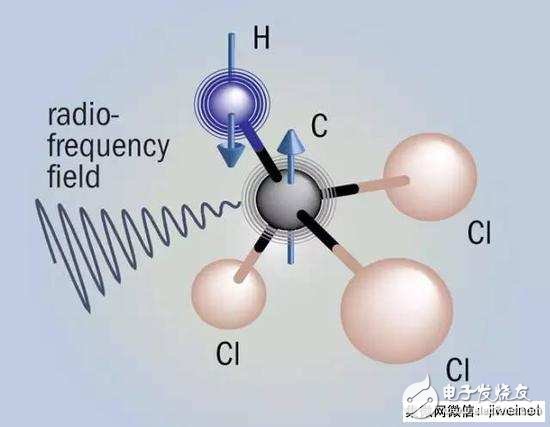They hope this will help us figure out the source of the arrow of TIme, which is why time always flows from the past to the future.
An international team of physicists recently measured the disorder of a microscopic quantum system, the so-called entropy. They hope this will help us figure out the source of the arrow of TIme, which is why time always flows from the past to the future. In the experiment, they used an oscillating magnetic field to constantly flip the spin of the carbon atom and attribute the generation of the time arrow to the quantum fluctuation between the spin states of two different atoms.
"Time is directional, which is why we remember what happened yesterday, but we don't know what will happen tomorrow." One of the team members, Roberto Serra, a physicist who studies quantum information at the ABC Federal University in Brazil, said. He believes that at the most fundamental level, the asymmetry of time is related to quantum fluctuations.

Invert the carbon atom with an oscillating magnetic field Image source: Physics World
It is difficult to break the mirror
In the everyday world, we usually take the existence of the time arrow as a matter of course. We will see the eggs broken, but we won't see the egg whites, egg yolks, and eggshells re-aggregating together to form a complete egg. Although in our opinion, the laws of nature are obviously irreversible, physics does not have any mechanism to prevent such things from happening. Looking at the dynamic equation, the process of breaking the eggs is completely reversible. Not only can the complete egg be broken, but the broken egg can be re-closed.
However, the concept of entropy gives us a window to understand the time arrow. Most eggs look the same, but broken eggs can take on a variety of shapes: it can be knocked open and evenly mixed, or it can be broken on the ground, splashed everywhere, and it is Because the number of disordered states is much more than the ordered state, the system is more likely to develop toward disorder.
This reasoning from the perspective of probability is the core of the second law of thermodynamics, which believes that the entropy of closed systems will always increase with time. According to the second law, time cannot be reversed because it leads to a decrease in entropy. For complex systems consisting of a large number of interacting particles, such as eggs, this argument makes sense, but for systems that contain only one particle?
Unidentified field
Serra and colleagues explored this ambiguous area by measuring the entropy of all 13 carbon atoms in a liquid chloroform sample. Although the sample contains about 1 trillion chloroform molecules, its molecules have quantum properties that do not interact, which means that many experiments are repeated on the same carbon atom.
Serra and colleagues added an oscillating external magnetic field to the sample, which constantly flips the spin state of the carbon atoms, switching back and forth between up and down. The researchers slowly increased the oscillation speed of the magnetic field to increase the frequency of the spin flip, and then slowly dropped to the original value.
If the system is reversible, then the distribution of the spin state of the last carbon atom will be the same as the initial situation. However, Serra and colleagues found that the disorder of the final carbon atom spin state increased by the NMR and quantum tomography. Since this system is quantum, this is equivalent to an increase in the entropy of a single carbon atom.
Researchers say that the entropy of individual atoms increases because their spins are forced to flip too fast. Because of the inability to keep up with the oscillating speed of the external magnetic field, the atoms can only begin to randomly rise and fall, just as dance beginners can't keep up with fast-paced music. “When dancing, slow-paced music is always simpler than fast-paced music,†Serra said.
Things are not finished yet
Mark Raizen, an experimental physicist who also studies the irreversibility of quantum systems at the University of Texas at Austin, said that the team did observe the time arrows of quantum systems. But he also stressed that they did not observe how the time arrow "produces". "This study did not allow us to fully understand the time arrow, and there are still many issues to be resolved," he said.
One of these problems is the relationship between the time arrow and quantum entanglement. Quantum entanglement refers to the immediate correlation between two particles, even when the two particles are far apart. This concept has been around for nearly three decades, and the heat has increased recently. However, the correlation between time arrows and quantum entanglement has little to do with the increase of entropy, and more is related to the unstoppable diffusion of quantum information.
However, Serra believes that by better controlling quantum entanglement, the reversal of the time arrow can be achieved in the microscopic system. "We are studying this," he said. "In the next quantum thermodynamic experiment, we might be able to find out."
resin encapsulated transformer,EI54 120v to 12v transformer,120v to 24v transformer,480v to 24v transformer
IHUA INDUSTRIES CO.,LTD. , https://www.ihua-transformer.com